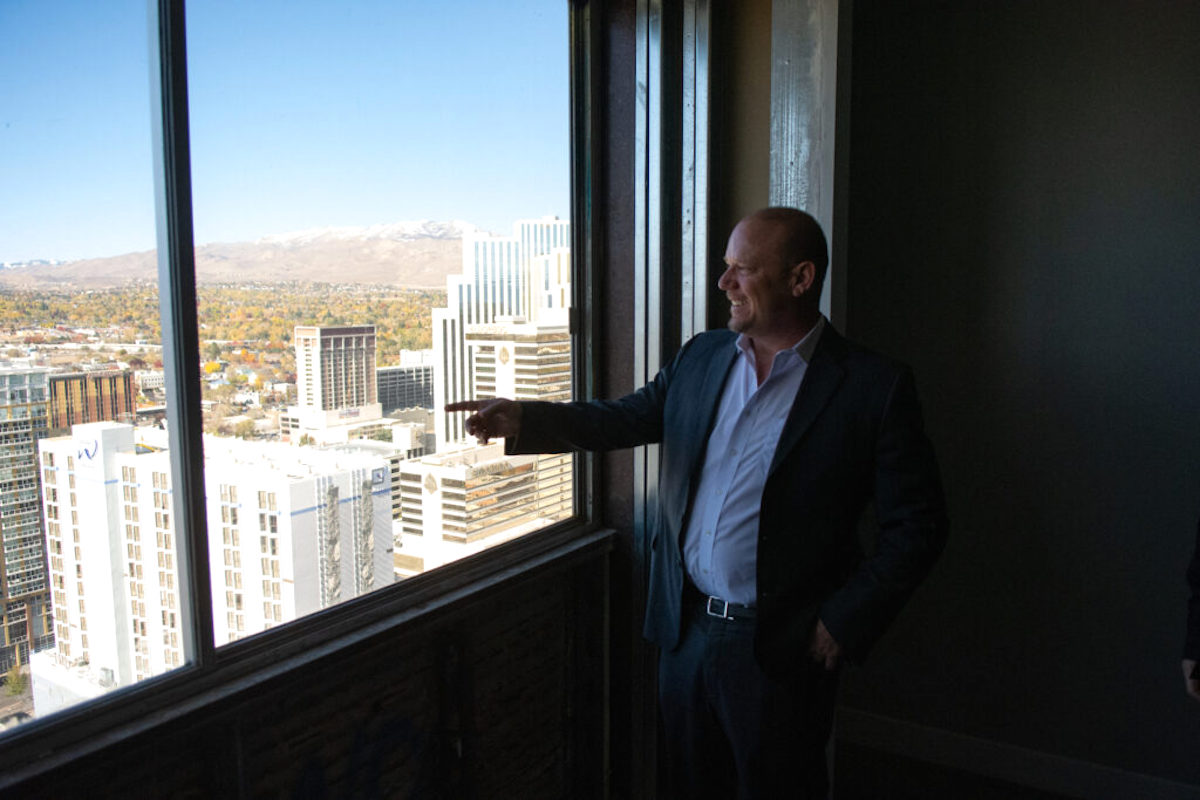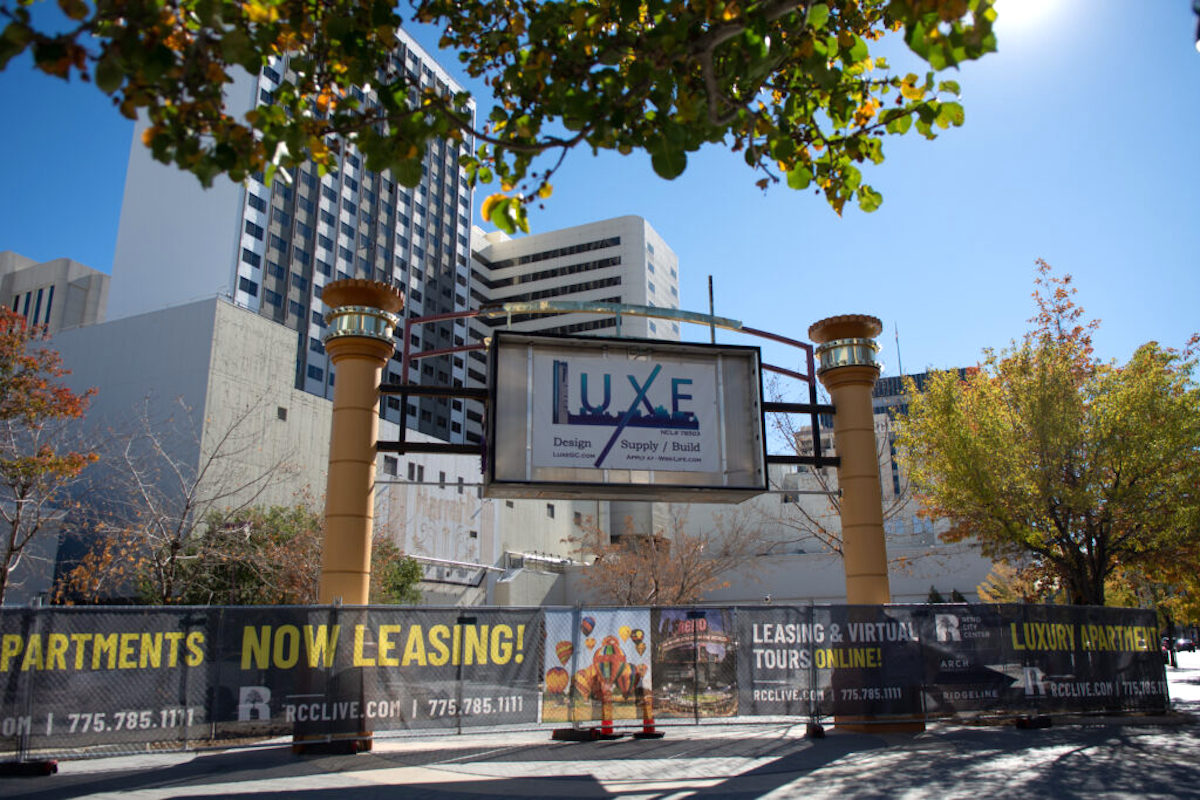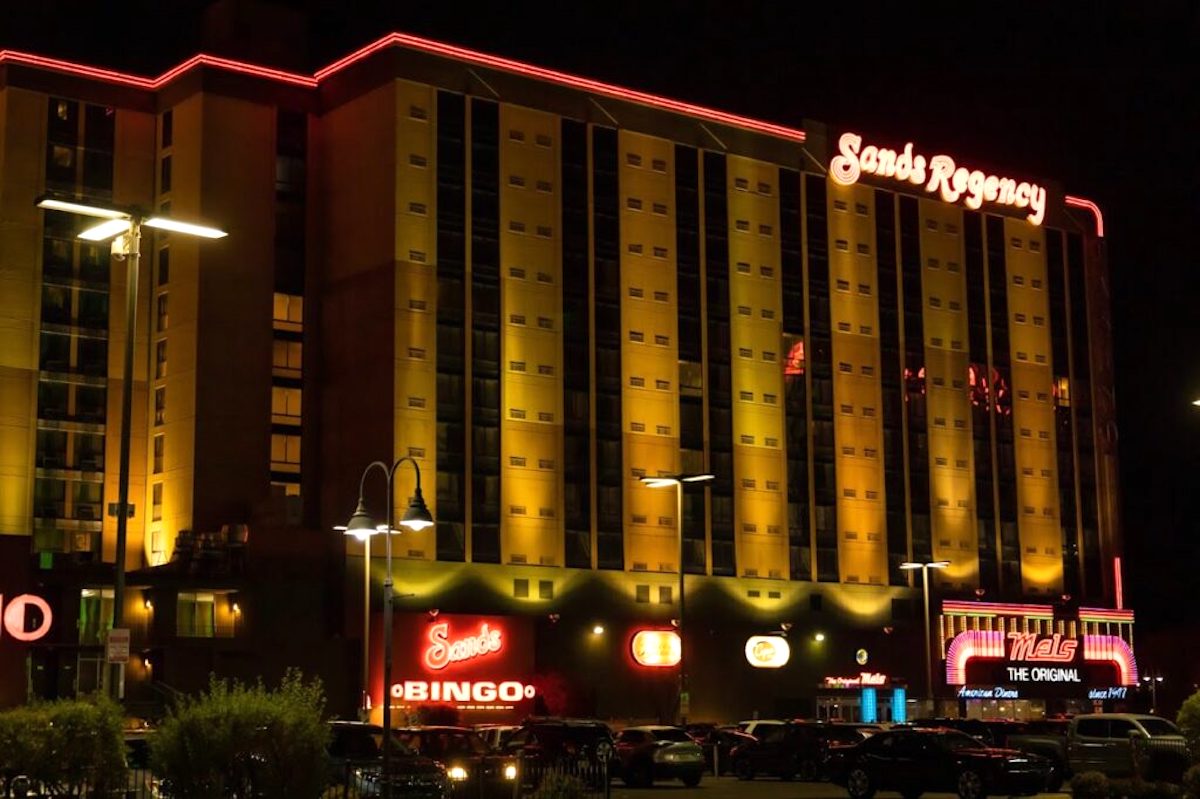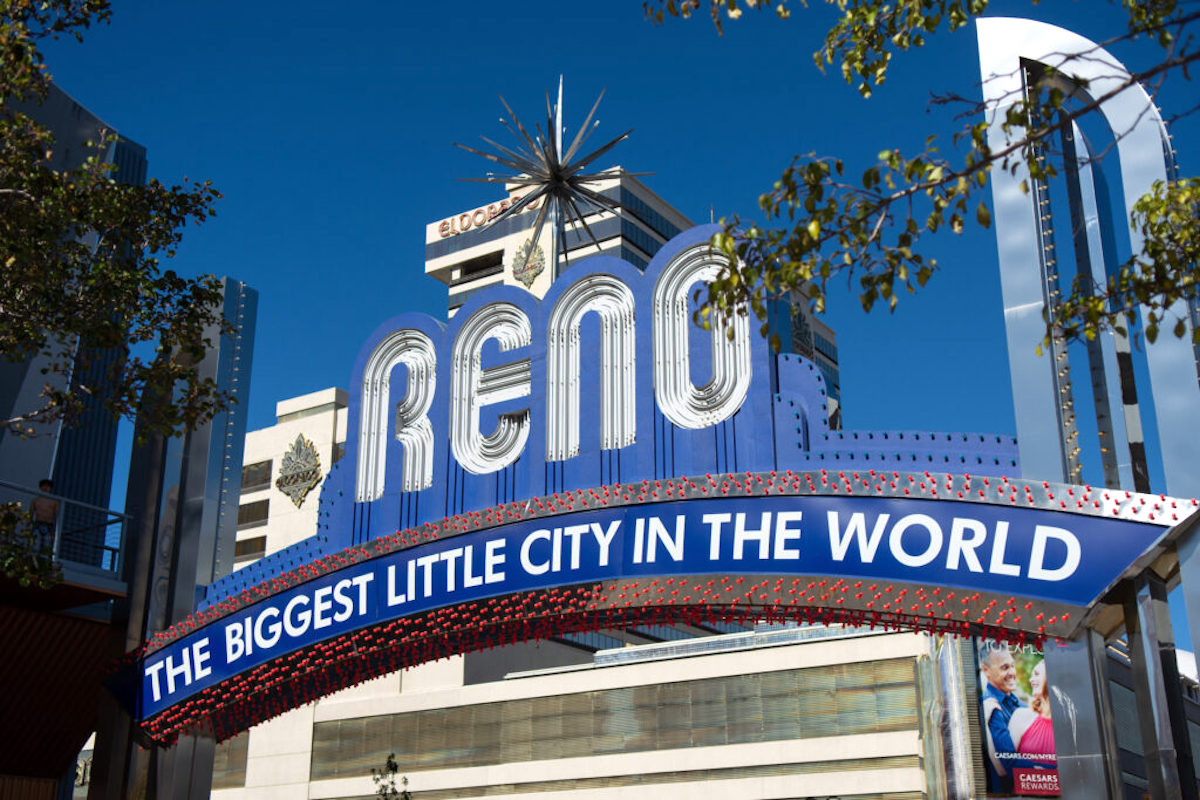Whitney Peak Hotel, left, and The Row properties — Eldorado, Silver Legacy and Circus Circus — are seen from a window inside the main tower of Reno City Center on Thursday, Oct. 28, 2021. Photo: David Calvert / The Nevada Independent
 Chris Beavor, CEO of CAI Investments, gives a tour of Reno City Center in downtown Reno on Thursday, Oct. 28, 2021. Photo: David Calvert / The Nevada Independent
Chris Beavor, CEO of CAI Investments, gives a tour of Reno City Center in downtown Reno on Thursday, Oct. 28, 2021. Photo: David Calvert / The Nevada Independent
 Reno City Center in downtown Reno on Thursday, Oct. 28, 2021. Photo: David Calvert / The Nevada Independent
Reno City Center in downtown Reno on Thursday, Oct. 28, 2021. Photo: David Calvert / The Nevada Independent
 Jacobs Entertainment CEO Jeff Jacobs. Courtesy Photo
Jacobs Entertainment CEO Jeff Jacobs. Courtesy Photo
 Sands Regency Casino in Reno on Tuesday, Oct. 26, 2021. Photo: Joey Lovato / The Nevada Independent
Sands Regency Casino in Reno on Tuesday, Oct. 26, 2021. Photo: Joey Lovato / The Nevada Independent
 The Reno Arch in downtown Reno on Thursday, Oct. 28, 2021. Photo: David Calvert / The Nevada Independent
The Reno Arch in downtown Reno on Thursday, Oct. 28, 2021. Photo: David Calvert / The Nevada Independent